What is a smart material?
A smart material can be defined as a material that changes its properties in response to an external stimulus without any further intermediate transition. In other words, a smart material changes directly its properties (shape, colour, transparency, mechanical behaviour, etc.) due to external sources such as temperature, electricity, light and pressure.
Smart Materials have been used for years in different sectors such as in automotive, aerospace and medicine and they are opening new ways to design high-performance buildings. These materials are really offering extraordinary possibilities even in building design.
For instance, taking advantage of smart materials, future building envelopes can dynamically change their properties by self-adapting their configuration in response to different environmental conditions. The increasing interest toward adaptive architectures, especially shape morphing architectures and bio-inspired movements, has drew the attention to smart materials able to perform a change of shape, or trigger building devices such as shading systems, without additional mechanical means and/or actuators.
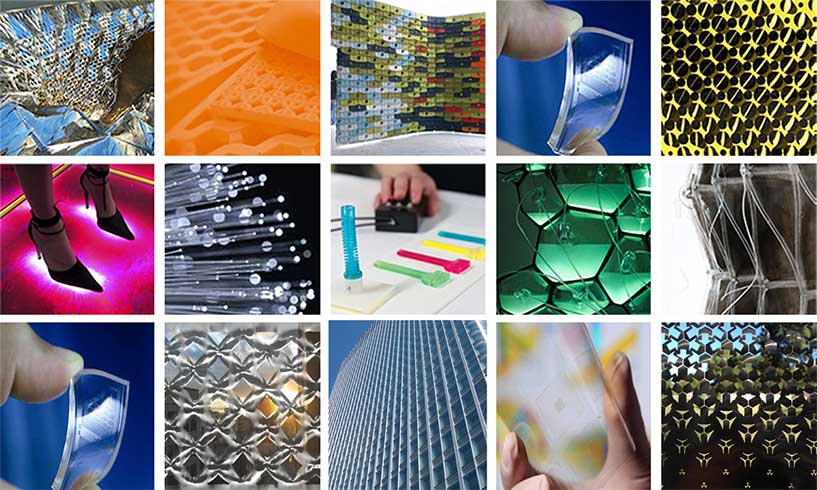
Types of Smart Materials
In regards building and architecture applications, the most investigated and diffused smart materials can be divided into two groups:
- materials that perform a change in their properties (i.e. mechanical, chemical, thermal etc.) as a response to an external stimulus (photochromic materials, shape memory materials and phase change materials);
- materials that transform an energy input into an another energy form (i.e. photovoltaic and piezoelectric materials).
Phase change materials (PCMs)
PCMs are used to store thermal energy; indeed PCMs by changing their phase (typically from solid to liquid) absorb heat. In buildings they can be used to create “artificial” thermal mass.
PCMs are currently applied into internal renders or integrated in plasterboards. They find a typical application in buildings where there are high internal loads and, at the same time, high temperature difference between day and night. Indeed, PCMs are able to reduce the pick loads by changing their phase and transforming the internal heat into latent heat which is then released via natural or mechanically driven night-time ventilation.
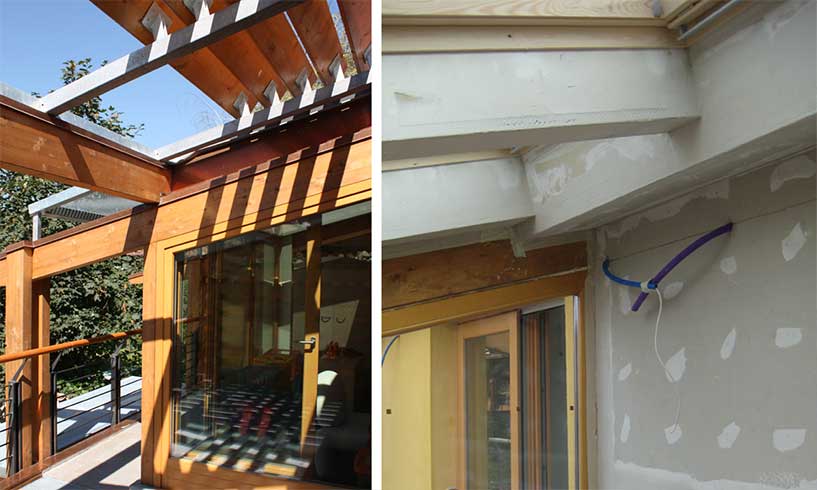
Chromogenic Smart Materials (CSMs)
Among these materials are included all the materials able to perform a change in their visible appearance (e.g. colour or opacity).
This visibly change can be obtained by electrical energy (e.g. electrochromics materials, electrophoretic media), by ultraviolet (UV) illumination (e.g. photochromic materials), by temperature variations (e.g. thermochromic materials).
The application of chromogenic smart materials in architecture refers to building envelopes and windows in particular. Switchable glazing and electrochromic and photochromic windows are the most diffused. Sun glasses are a typical example of photocromic glass, which change their colour (becoming darker) when affected by solar rays.
PhotoVoltaChromic Cells (PVCCs)
Remarkable recent improvements of composite smart materials are PhotoVoltaChromic Cells (PVCCs) which are able to produce electrical energy from solar radiation and to change the colour (the transparency) of the material in response to light. Windows and transparent envelopes are direct applications of these materials.
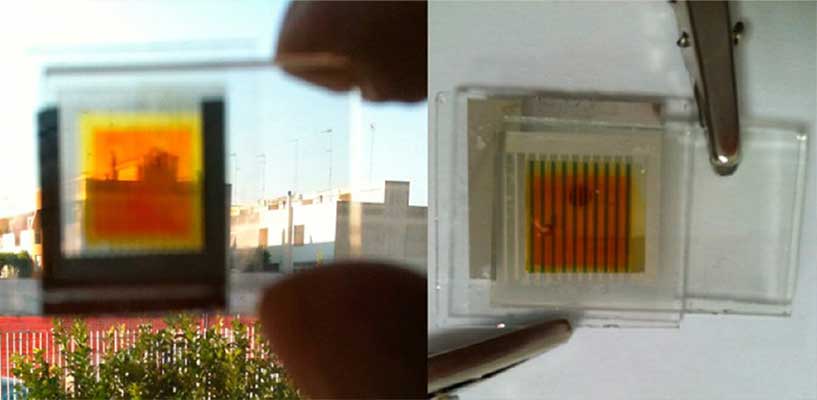
Electroactive Polymers (EAPs)
Electroactive Polymers (EAPs) can perform a change in shape when stimulated through electricity. They are lightweight and adaptable, but they incur durability issues and require a high voltage electrical current to be activated. They can also be used in a reverse manner, producing electricity when mechanically stimulated. The most common use of this type of materials is in actuators and sensors. EAPs are being considered for potential applications like movable shading devices and small scale wind turbines.
Shape Memory Polymers (SMPs)
Shape Memory Polymers can recover their original shape from a temporary deformed shape once a proper stimulus is applied (generally heat). SMPs are reasonable inexpensive, simple and flexible in use, even though the number of cycle (shape recovery) before the material decay is currently limited.
Shape Memory Alloys (SMAs)
The most studied Shape Memory materials in the past years are the Shape Memory Alloys. The most diffused are Nichel-Titanium based alloys and the best way of exploiting these materials is to use them as smart sensors or actuators. They have two interesting properties, one is that they contract when heated above a pre-determined temperature and the other is that they have a super-elastic behaviour within a limited range of temperatures. SMAs are currently used for special structural reinforcement and for self-adaptive solar shading devices.
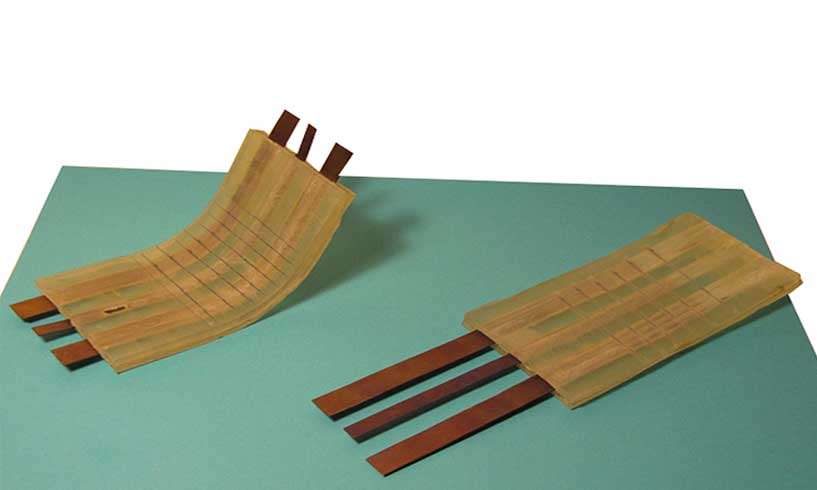
Thermo-Bimetals
Thermo-Bimetals are another type of smart materials. Thanks to the combination of two different metals with different expansion coefficients they are able to curve, changing temporary their shape, when heated.
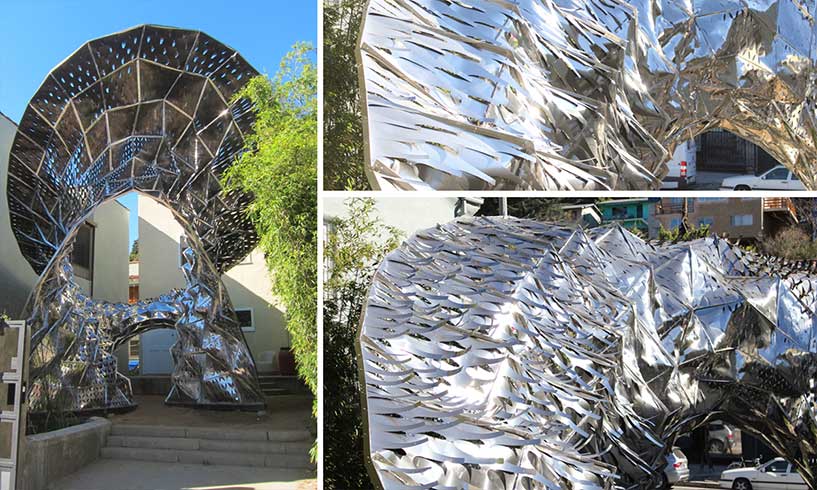
Applications of thermo-bimetals are shape morphing shading devices and other shape morphing architectural components.

The growing interest in adaptive and Net-Zero Energy Building (NZEB) has fuelled a wide number of research projects focused on smart materials and their application in architecture. It seems that these materials will become more and more important for the development of innovative building.
Written by Dr. Michele Sauchelli – Façade Engineer & Sustainability Consultant
Further reading and information on smart materials:
Products
+ ThermaCool® ceiling tiles
+ Knauf Comfortboard
Architecture Offices
+ DOSU Studio Architecture
+ Atelier 2 Architects




